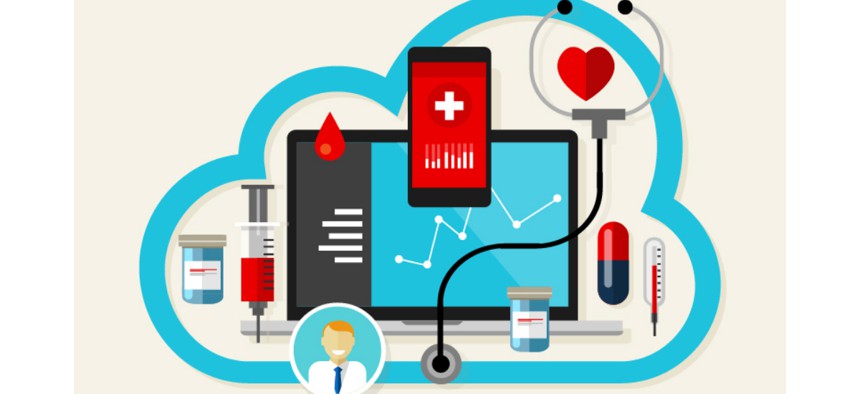NIH Partners With Google Cloud to Speed Up Medical Breakthroughs

Bakhtiar Zein/Shutterstock.com
The move is part of the agency's STRIDES initiative, which gives researchers more access to cloud tools.
The National Institutes of Health is giving its researchers access to more commercial cloud computing technologies to speed up biomedical innovation.
NIH on Tuesday kicked off the Science and Technology Research Infrastructure for Discovery, Experimentation and Sustainability Initiative, or STRIDES, which establishes new partnerships aimed at bringing researchers advanced cloud services and tools.
The high-powered analytics tools provided through the program would reduce the time and cost it takes to crunch massive biomedical data sets, which could ultimately lead teams to make more medical breakthroughs, NIH said in the program announcement. The program will initially focus on making “high-value” data sets accessible through the cloud and adopting data-centric machine learning and artificial intelligence applications.
“NIH is in a unique position to bring together academic and innovation industry partners to create a biomedical data ecosystem that maximizes the use of NIH-supported biomedical research data for the greatest benefit to human health,” said NIH Principal Deputy Director Dr. Lawrence Tabak, who also serves as the agency’s interim associate director for data science. “The STRIDES Initiative aims to maximize the number of researchers working to provide the greatest number of solutions to advancing health and reducing the burden of disease.”
NIH officials selected Google Cloud as the first industry partner. Through STRIDES, the company will open its cloud storage, computing and machine learning technologies to researchers at NIH and more than 2,500 institutions that receive federal funds. Google Cloud will also collaborate frequently with NIH Data Commons, a program focused on developing tools to share biomedical data in the cloud.
The announcement comes weeks after NIH published a strategic plan for data science, which details the agency’s efforts to reorganize its vast troves of information, increase employees’ data prowess and increase access to analytics tools more broadly.
The Health and Human Services Department, NIH’s parent agency, is also working to break down information silos across its various subcomponents and investing heavily in data analytics. The initiatives are sparking innovative research while also revolutionizing the way the agency fights insurance fraud and opioid abuse.
“This is really a long-term strategy for the department,” HHS Chief Data Officer Mona Siddiqui told Nextgov. “Transforming a large organization into one that uses data in how it operates and leverages data as an asset is not really a six-month or a two-year journey. It’s really about a 15- to 20-year commitment.”






